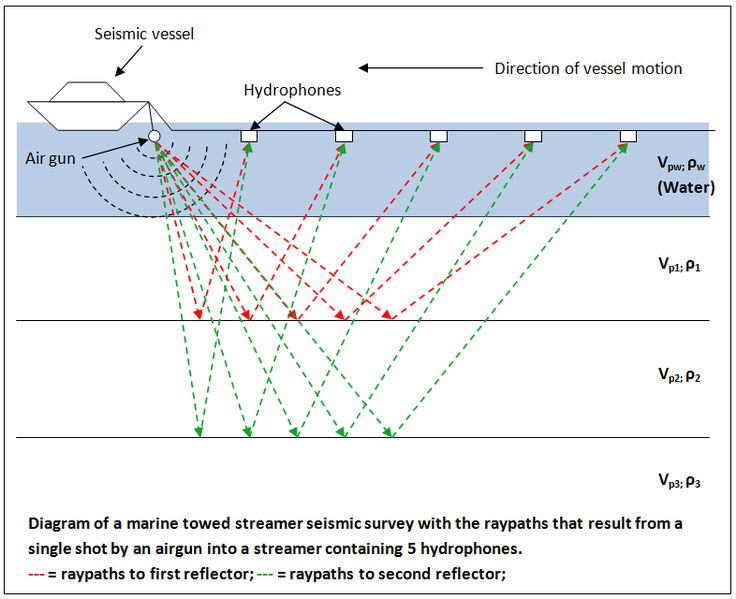- Searcher Seismic has announce the significant expansion of its South Africa 2D and 3D data library in cooperation with Petroleum Agency of South Africa (PASA).
- PASA promotes exploration for onshore and offshore oil and gas resources and their optimal development on behalf of the South African government.
The news of the return of Searcher comes at a time when nine applicants have filed heads of argument at the Eastern Cape Division of the High Court to permanently interdict Shell from conducting a seismic survey off the Wild Coast of South Africa. The applicants are made up of local communities, civil society organisation’s and environmental heavy weights like Greenpeace. This follows a ruling made in the Grahamstown High Court back in late December 2021 which ordered Shell to immediately cease its seismic blasting along South Africa’s Wild Coast pending the hearing of Part B of the application – which seeks the court to review and set aside an exploration right allowing the survey to take place.

The Seismic Warrior was set to drag up to 48 air guns methodically through 6 011km² of ocean surface from Morgan Bay to Port St Johns over a five month period. Image credit: Greenpeace
The respondents in the matter include Mineral Resources and Energy Minister Gwede Mantashe, Forestry, Fisheries and Environment Minister Barbara Creecy, Shell Exploration and Production in South Africa, and Impact Africa Limited and BG International Limited. Subsequent to the interdict issued in December 2021, Mantashe has embarked on a consultation process with local communities. Read more
Related news:Uproar Over Another Seismic Survey EIA Approval in South Africa – this time on West Coast
Searcher maintains that Orange Basin has recently astonished the world with the discovery of multiple billion barrels of light oil in Namibia, very close to the border with South Africa. The discovery plays extend into South Africa, and it is into the industries excitement for the Orange Basin that Searcher announces its extended South Africa 2D and 3D rectified seismic dataset which now comprises 107,500 kilometres of 2D data and 8,790 square kilometres of 3D data.
Searcher has applied its proprietary post-stack reprocessing method which rectifies navigation, metadata, amplitude, phase and time to create a contiguous database that can be easily accessed on its web-platform, sAIsmic.
The success in the Orange Basin comes on the back of significant discoveries of gas condensate in South Africa’s Southern Outeniqua Basin in 2019. The dataset facilitates the investigation of the distribution of plays and traps in South Africa and is suitable for preliminary exploration analysis – basin modelling, isopach and play fairway building.

Diagram of a marine seismic survey. Image credit: Wikimedia Commons
“We congratulate TotalEnergies and Shell on their successes in the Orange Basin and South Outeniqua Basin, and very pleased to also announce the extension of our 2D and 3D data library and to be expanding our presence in South Africa”, said Neil Hodgson, VP Geoscience at Searcher.
“The recent and significant oil discoveries from Venus 1-X and Graff-1 wells in the Orange Basin, Namibia proves the potential of this basin which also extends into South African waters. It is a very exciting time for this region and the long under-valued Orange Basin.”
The South Africa 2D and 3D rectified seismic database is available now on Searcher’s subscription platform, sAIsmic, for easy and instant access to explorers.
Author: Bryan Groenendaal
Why is seismic surveys so controversial?
In 2D seismic surveying both the blast and sound detectors (numbering up to a hundred or more per charger) are moved along a straight line. In 3D seismic surveying the sound detectors (numbering up to a thousand or more) are spread out over an area and the blast is moved from location to location through the area. Seismic testing involves sending regular “blasts” under water in short sequence to create a map of the surface and sub-surface.
The noise generated can reach 250 decibels as the sound waves generated by the blast penetrate the seabed. In comparison, the loudest whale noises range between 140 and 190 decibels.
This sound is proven in multiple peer-reviewed research papers to disturb, scare and alter marine life such as separating whales and their calves. This affects the endangered African Penguin, two subspecies of Blue Whales, the Antarctic Blue Whale and the Pygmy Blue Whale, the protected Southern Right Whales, Bryde’s Whales, Loggerhead Sea Turtles, Orcas and multiple Shark species all found along the Western Cape coast.















